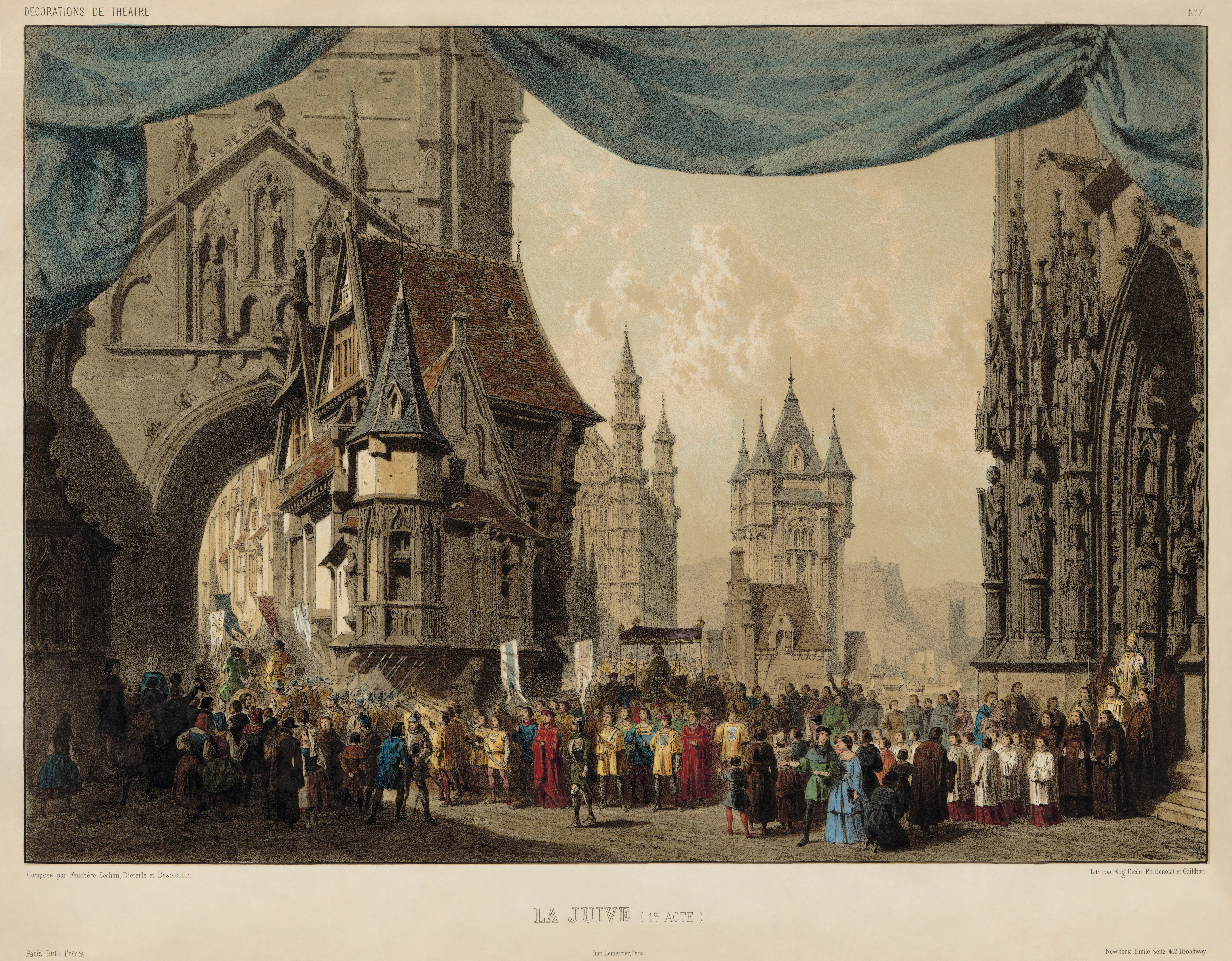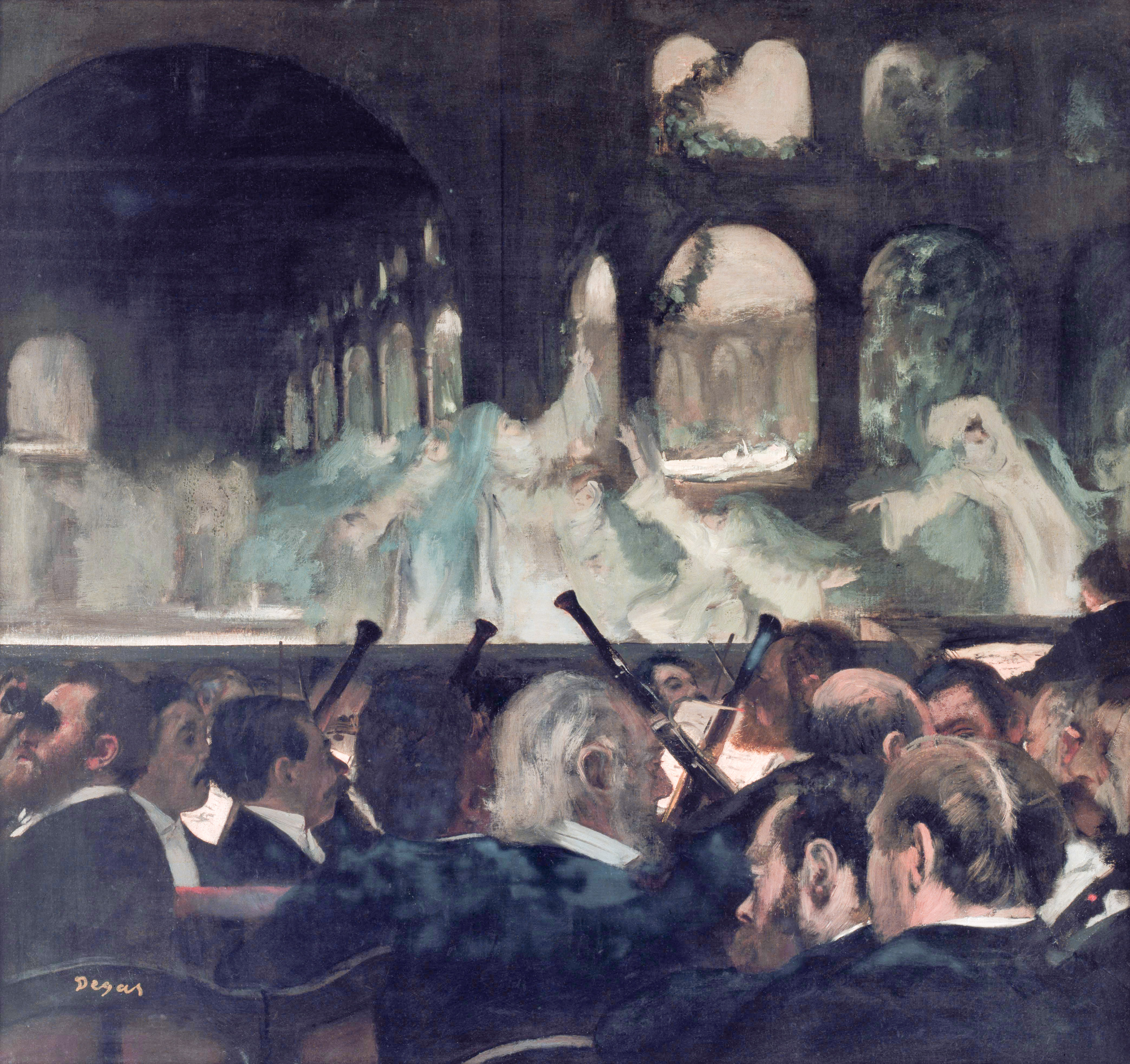|
Sapho (Gounod)
''Sapho'' is a 3-act opera by Charles Gounod to a libretto by Émile Augier which was premiered by the Paris Opera at the Salle Le Peletier on 16 April 1851. It was presented only 9 times in its initial production, Lajarte 1878p. 208 but was a ''succès d'estime'' for the young composer, with the critics praising Act 3 in particular.Huebner 1992, p. 176. It was later revived in 2-act (1858) and 4-act (1884) versions, achieving a total of 48 performances.Wolff 1962, pp. 198–199. Background The impetus for the composition of Gounod's first opera, and its acceptance for performance at France's premiere opera house, was primarily due to the influence of Pauline Viardot, who met the young composer in January or February 1850, shortly after her triumph there in Meyerbeer's ''Le prophète''.Huebner 1990, p. 26. In his memoirs Gounod relates that the violinist François Seghers, who at that time was the leader of the Concerts de la Société Sainte-Cécile on the Rue Chaussée-d'Antin ... [...More Info...] [...Related Items...] OR: [Wikipedia] [Google] [Baidu] |
Charles Gounod
Charles-François Gounod (; ; 17 June 181818 October 1893), usually known as Charles Gounod, was a French composer. He wrote twelve operas, of which the most popular has always been ''Faust (opera), Faust'' (1859); his ''Roméo et Juliette'' (1867) also remains in the international repertory. He composed a large amount of church music, many songs, and popular short pieces including his Ave Maria (Bach/Gounod), Ave Maria (an elaboration of a Johann Sebastian Bach, Bach piece), and ''Funeral March of a Marionette''. Born in Paris into an artistic and musical family Gounod was a student at the Conservatoire de Paris and won France's most prestigious musical prize, the Prix de Rome. His studies took him to Italy, Austria and then Prussia, where he met Felix Mendelssohn, whose advocacy of the music of Bach was an early influence on him. He was deeply religious, and after his return to Paris, he briefly considered becoming a priest. He composed prolifically, writing church music, songs ... [...More Info...] [...Related Items...] OR: [Wikipedia] [Google] [Baidu] |
Henry Chorley
Henry Fothergill Chorley (15 December 1808 – 16 February 1872) was an English literary, art and music critic, writer and editor. He was also an author of novels, drama, poetry and lyrics. Chorley was a prolific and important music and literary critic and music gossip columnist of the mid-nineteenth century and wrote extensively about music in London and in Europe. His opera libretti and works of fiction were far less successful. He is perhaps best remembered today for his lyrics to " The Long Day Closes", a part song set by Arthur Sullivan in 1868. Life and career Chorley was born in Blackley Hurst, near Billinge, Lancashire, England. Chorley was the youngest of four children of Quaker parents, John Chorley (1771–1816), an iron worker and lock maker, and Jane Chorley, née Wilkinson (1779–1851). Chorley's father died, leaving his mother alone with young children. Jane Chorley moved her family to Liverpool to help take care of her half-brother, Dr Rutter, when he bec ... [...More Info...] [...Related Items...] OR: [Wikipedia] [Google] [Baidu] |
Royal Opera House
The Royal Opera House (ROH) is an opera house and major performing arts venue in Covent Garden, central London. The large building is often referred to as simply Covent Garden, after a previous use of the site. It is the home of The Royal Opera, The Royal Ballet, and the Orchestra of the Royal Opera House. The first theatre on the site, the Theatre Royal (1732), served primarily as a playhouse for the first hundred years of its history. In 1734, the first ballet was presented. A year later, the first season of operas, by George Frideric Handel, began. Many of his operas and oratorios were specifically written for Covent Garden and had their premieres there. The current building is the third theatre on the site, following disastrous fires in 1808 and 1856 to previous buildings. The façade, foyer, and auditorium date from 1858, but almost every other element of the present complex dates from an extensive reconstruction in the 1990s. The main auditorium seats 2,256 people, mak ... [...More Info...] [...Related Items...] OR: [Wikipedia] [Google] [Baidu] |
La Juive
''La Juive'' () (''The Jewess'') is a grand opera in five acts by Fromental Halévy to an original French libretto by Eugène Scribe; it was first performed at the Opéra, Paris, on 23 February 1835. Composition history ''La Juive'' was one of the most popular and admired operas of the 19th century. Its libretto (text) was the work of Eugène Scribe, the prolific dramatic author. Scribe was writing to the tastes of the Opéra de Paris, where the work was first performed – a work in five acts presenting spectacular situations (here the Council of Constance of 1414), which would allow a flamboyant staging in a setting which brought out a dramatic situation which was also underlined by a powerful historical subject. In addition to this, there could be choral interludes, ballet and scenic effects which took advantage of the entire range of possibilities available at the Paris Opera. Because of the story of an impossible love between a Christian man and a Jewish woman, the work ha ... [...More Info...] [...Related Items...] OR: [Wikipedia] [Google] [Baidu] |
Journal Des Débats
The ''Journal des débats'' ( French for: Journal of Debates) was a French newspaper, published between 1789 and 1944 that changed title several times. Created shortly after the first meeting of the Estates-General of 1789, it was, after the outbreak of the French Revolution, the exact record of the debates of the National Assembly, under the title ''Journal des Débats et des Décrets'' ("Journal of Debates and Decrees"). Published weekly rather than daily, it was headed for nearly forty years by Bertin l'Aîné and was owned for a long time by the Bertin family. During the First Empire it was opposed to Napoleon and had a new title imposed on it, the ''Journal de l'Empire''. During the first Bourbon Restoration (1813–1814), the ''Journal'' took the title ''Journal des Débats Politiques et Littéraires'', and, under the second Restoration, it took a conservative rather than reactionary position. Under Charles X and his entourage, the ''Journal'' changed to a position sup ... [...More Info...] [...Related Items...] OR: [Wikipedia] [Google] [Baidu] |
Hector Berlioz
In Greek mythology, Hector (; grc, Ἕκτωρ, Hektōr, label=none, ) is a character in Homer's Iliad. He was a Trojan prince and the greatest warrior for Troy during the Trojan War. Hector led the Trojans and their allies in the defense of Troy, killing countless Greek warriors. He was ultimately killed in single combat by Achilles, who later dragged his dead body around the city of Troy behind his chariot. Etymology In Greek, is a derivative of the verb ἔχειν ''ékhein'', archaic form * grc, ἕχειν, hékhein, label=none ('to have' or 'to hold'), from Proto-Indo-European *'' seɡ́ʰ-'' ('to hold'). , or as found in Aeolic poetry, is also an epithet of Zeus in his capacity as 'he who holds verything together. Hector's name could thus be taken to mean 'holding fast'. Description Hector was described by the chronicler Malalas in his account of the ''Chronography'' as "dark-skinned, tall, very stoutly built, strong, good nose, wooly-haired, good beard, sq ... [...More Info...] [...Related Items...] OR: [Wikipedia] [Google] [Baidu] |
Giacomo Meyerbeer
Giacomo Meyerbeer (born Jakob Liebmann Beer; 5 September 1791 – 2 May 1864) was a German opera composer, "the most frequently performed opera composer during the nineteenth century, linking Mozart and Wagner". With his 1831 opera ''Robert le diable'' and its successors, he gave the genre of grand opera 'decisive character'. Meyerbeer's grand opera style was achieved by his merging of German orchestra style with Italian vocal tradition. These were employed in the context of sensational and melodramatic libretti created by Eugène Scribe and were enhanced by the up-to-date theatre technology of the Paris Opéra. They set a standard which helped to maintain Paris as the opera capital of the nineteenth century. Born to a rich Jewish family, Meyerbeer began his musical career as a pianist but soon decided to devote himself to opera, spending several years in Italy studying and composing. His 1824 opera '' Il crociato in Egitto'' was the first to bring him Europe-wide reputation, but ... [...More Info...] [...Related Items...] OR: [Wikipedia] [Google] [Baidu] |
Christoph Willibald Gluck
Christoph Willibald (Ritter von) Gluck (; 2 July 1714 – 15 November 1787) was a composer of Italian and French opera in the early classical period. Born in the Upper Palatinate and raised in Bohemia, both part of the Holy Roman Empire, he gained prominence at the Habsburg court at Vienna. There he brought about the practical reform of opera's dramaturgical practices for which many intellectuals had been campaigning. With a series of radical new works in the 1760s, among them '' Orfeo ed Euridice'' and '' Alceste'', he broke the stranglehold that Metastasian '' opera seria'' had enjoyed for much of the century. Gluck introduced more drama by using orchestral recitative and cutting the usually long da capo aria. His later operas have half the length of a typical baroque opera. Future composers like Mozart, Schubert, Berlioz and Wagner revered Gluck very highly. The strong influence of French opera encouraged Gluck to move to Paris in November 1773. Fusing the traditions ... [...More Info...] [...Related Items...] OR: [Wikipedia] [Google] [Baidu] |
Grand Opera
Grand opera is a genre of 19th-century opera generally in four or five acts, characterized by large-scale casts and orchestras, and (in their original productions) lavish and spectacular design and stage effects, normally with plots based on or around dramatic historic events. The term is particularly applied (sometimes specifically used in its French language equivalent grand opéra, ) to certain productions of the Paris Opéra from the late 1820s to around 1850; 'grand opéra' has sometimes been used to denote the Paris Opéra itself. The term 'grand opera' is also used in a broader application in respect of contemporary or later works of similar monumental proportions from France, Germany, Italy, and other countries. It may also be used colloquially in an imprecise sense to refer to 'serious opera without spoken dialogue'. Origins Paris at the turn of the 19th century drew in many composers, both French and foreign, and especially those of opera. Several Italians working d ... [...More Info...] [...Related Items...] OR: [Wikipedia] [Google] [Baidu] |
Charles Séchan
Charles Polycarpe Séchan (29 June 1803 – 14 September 1874) was a French painter and theatre designer. Life Born in Paris, son of the tailor merchant Jean-Fris Séchan, he lost his parents, who had no fortune, very early on. He learned the first elements of drawing from a humble local school. He made his first steps in the career by entering the studio of Lefèvre, decorator of the Théâtre de la Porte-Saint-Martin. He created the sets of ''Périnet Leclerc'', by Lockroy and Auguste Anicet-Bourgeois Auguste Anicet, later Auguste Anicet-Bourgeois (25 December 1806 – 12 January 1871) was a French dramatist. He was born in Paris. The first play to bear his name is ''L'Ami et le mari, ou le Nouvel Amphitryon'', a vaudeville in one act. It ..., and particularly the one representing a ''Vue du vieux Paris'', was executed entirely on his drawings. After four or five years in the Lefèvre workshop, he moved to the Ciceri workshop, the first and most famous in his time.. ... [...More Info...] [...Related Items...] OR: [Wikipedia] [Google] [Baidu] |










